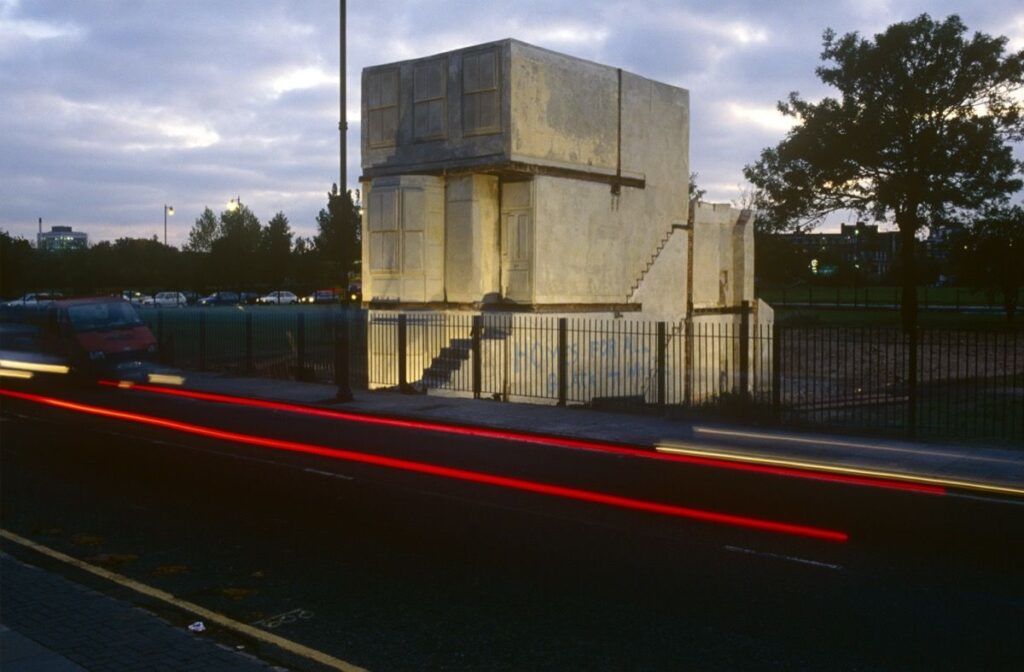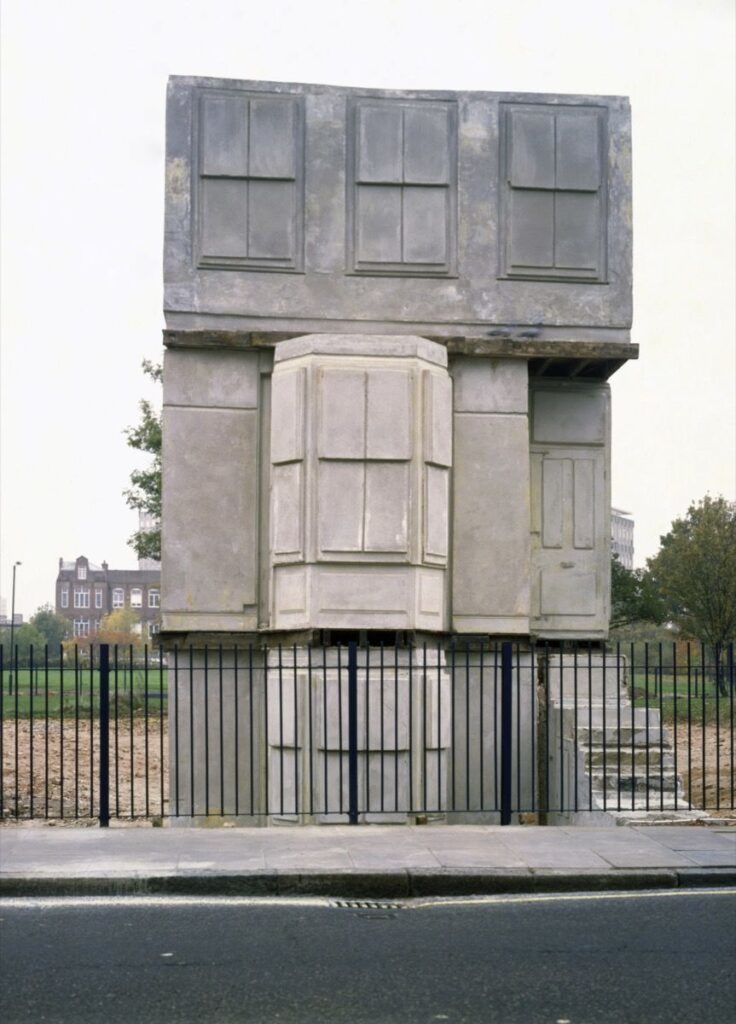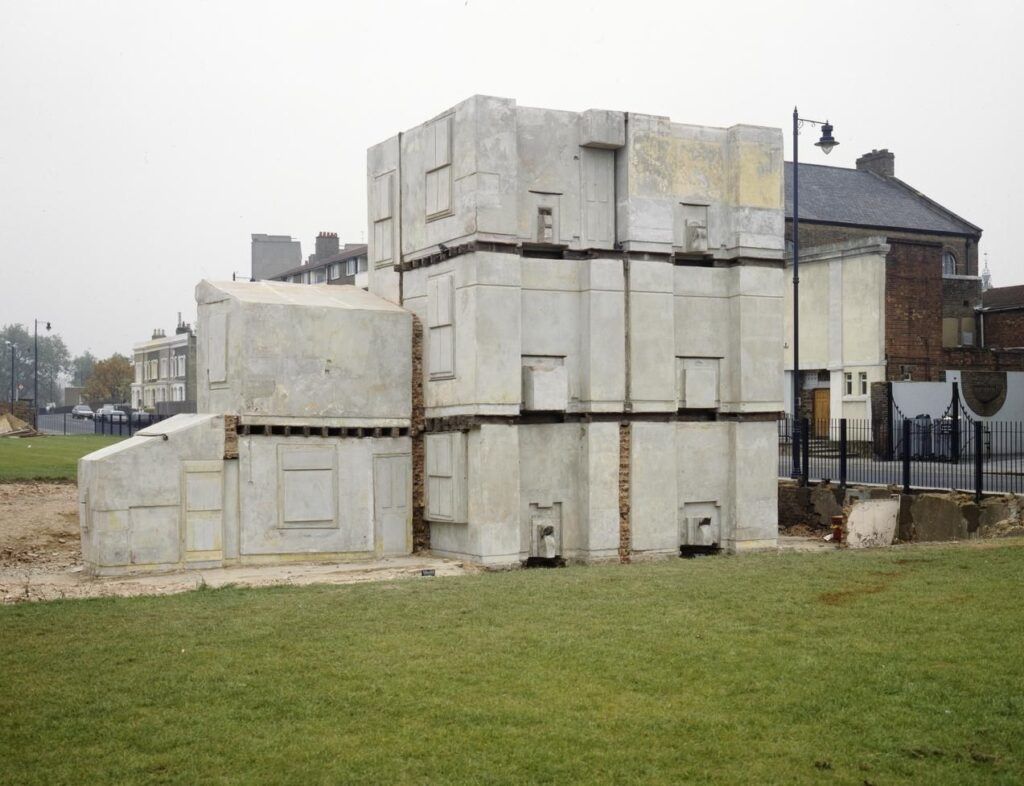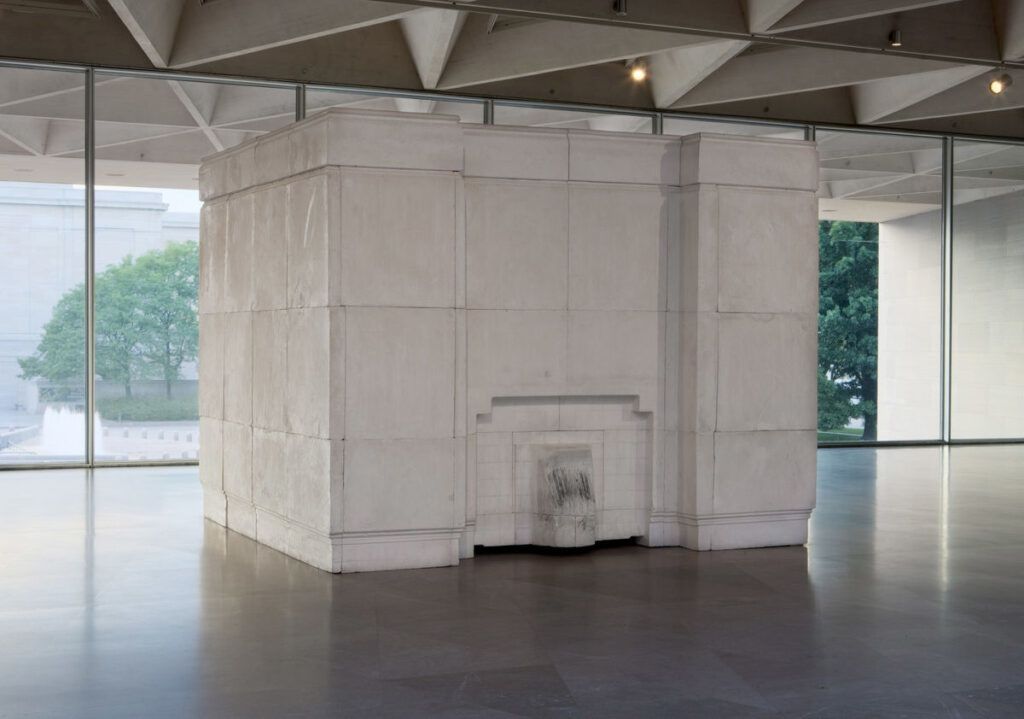Controversial Concrete “House” by Rachel Whiteread

While she has cast everything from ordinary objects to the spaces under stairs in concrete, perhaps the most impressive and controversial work by installation artist and sculptor Rachel Whiteread is simply titled House. Like a photographic negative, it inverts the relationship of solid and void, making rock-hard reality out of empty interior space while disappearing the cumbersome walls, floors, ceilings, steps and roof that are the normal hallmarks of our domestic enclosures.
This townhouse, already slated for demolition, was the last of its kind on the block – already a stand-alone object in a desolate land. Her work could be considered a piece of deconstruction in the postmodern sense, pun either intended or not. The reverse-construction of this structure involved layers of scaffolding and liquid concrete carefully sprayed into every nook and cranny of the building before being left to set. Then the structural elements were pealed away, leaving only the filled void behind in solid cast concrete.

Perhaps unsurprisingly, this unlikely home-to-art conversion had a galvanizing effect on surrounding communities. The piece itself was regarded with mixed praise and criticism and won several awards, but much was also made of what it meant conceptually to displaced people and disregarded homes and demolished works of historic architecture.

Here’s Whitehead’s bio from Tate London:
“Rachel Whiteread was born in London in 1963. She studied painting at Brighton Polytechnic and sculpture at the Slade School of Fine Art. Whiteread is one of the few artists of her generation to have produced important public sculptures, some of which have achieved a monumental status and significance. Ghost, her breakthrough piece from 1990, is a plaster cast of a living room, modeled on a typical Victorian terraced house in north London, similar to the one in which the artist grew up. In its melancholic beauty, Ghost is a resonant monument both to the individuals who once occupied this room, and to our collective memories of home.”

“Whiteread represented the UK at the 1997 Venice Biennale and created Monument for the empty plinth in Trafalgar Square in 2001. One of her most recent solo exhibitions, Walls, Doors, Floors and Stairs at Kunsthaus Bregenz in late spring 2005, where Untitled (Room 101) 2003 was on display, was dedicated to the house as the central theme of her work. Whiteread was awarded the Turner Prize in 1993 just after creating House (1993; destroyed 1994), a life-sized replica of the interior of a condemned terraced house in London’s East End made by spraying liquid concrete into the building’s empty shell before its external walls were removed. Whiteread’s winning proposal for the Holocaust memorial for the Judenplatz in Vienna was one of the most prestigious sculptural commissions in Europe in the 1990s, and involved placing the cast interior of a library, including the imprint of books, in the centre of the square. It was unveiled in October 2000.”
Images via Artsy




